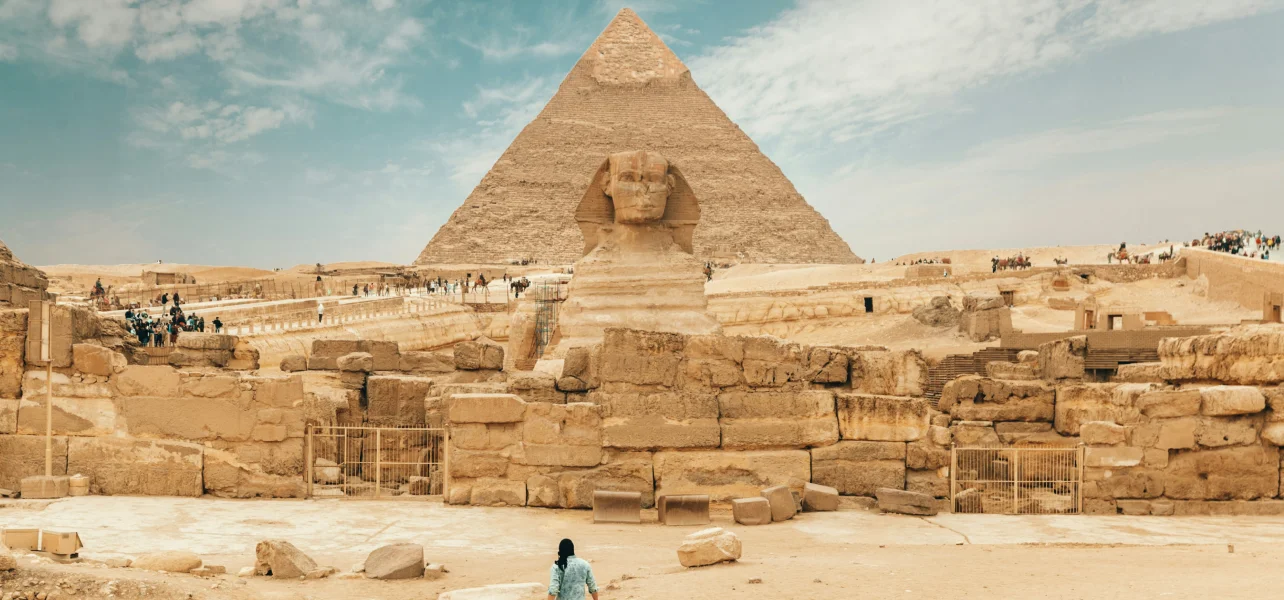
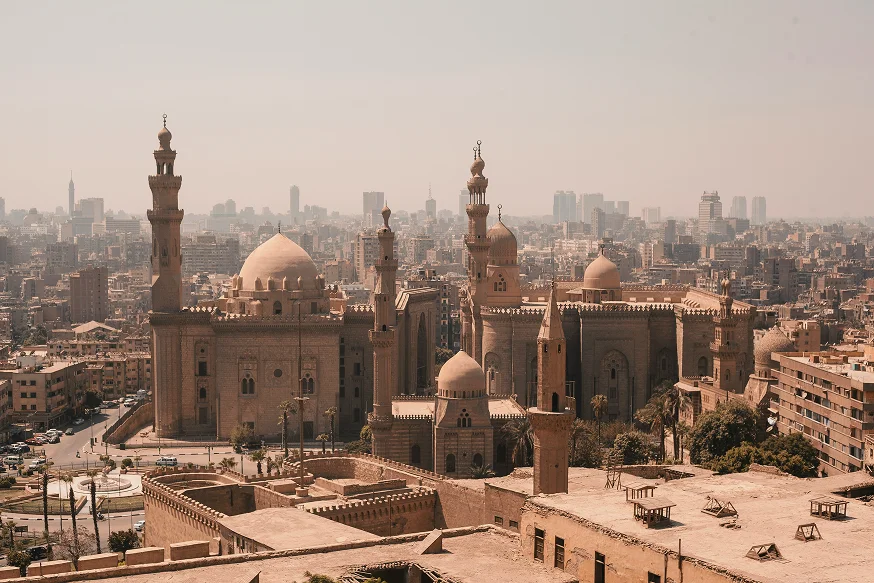
Experience Cairo with a custom sightseeing tour. Visit Coptic Cairo, Citadel of Saladin, Al-Azhar Mosque, and local markets, and discover hidden treasures. This Cairo sightseeing guide ensures you won’t miss any of the city’s top attractions
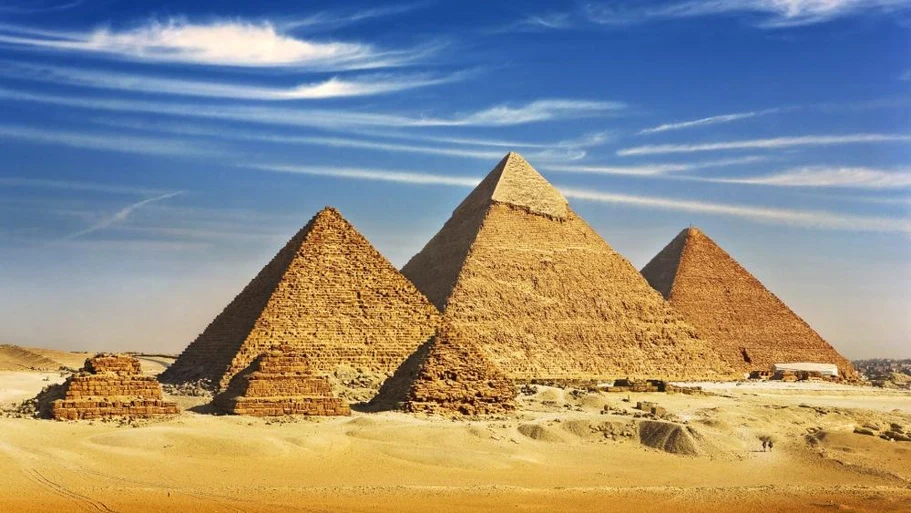
The Great Pyramid of Giza is a defining symbol of Egypt and the last of the ancient Seven Wonders of the World. It is located on the Giza plateau near the modern city of Cairo and was built over a twenty-year period during the reign of the king Khufu (2589-2566 BCE, also known as Cheops) of the 4th Dynasty. Until the Eiffel Tower was completed in Paris, France in 1889, the Great Pyramid was the tallest structure made by human hands in the world; a record it held for over 3,000 years and one unlikely to be broken. Other scholars have pointed to the Lincoln Cathedral spire in England, built in 1300, as the structure which finally surpassed the Great Pyramid in height but, still, the Egyptian monument held the title for an impressive span of time. The pyramid rises to a height of 146 meters with a base of 230 meters and is composed of over two million blocks of stone. Some of these stones are of such immense size and weight, that the logistics of raising and positioning them so precisely seems an impossibility by modern standards.
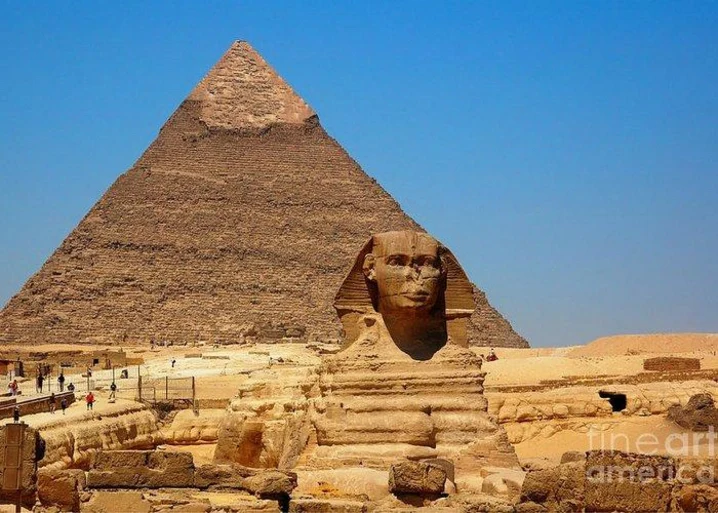
the second great pyramid of Giza was built by Khufu’s second son Khafre. Khafre lived during the ‘golden age’ of the Old Kingdom. The pyramids built by him and his family were the greatest in the history of Egypt and some of the greatest achievements in human history. In addition to this pyramid, the pharaoh also ordered the construction of his workers: The Sphinx, the Valley Temple, the processional road that goes from the pyramid to the funerary temple, and a solar boat. At the very top, a section of outer casing stones like those that would have originally covered all three of the Great Pyramids still survives. Although this monument appears larger than that of his father, it is actually slightly smaller but was constructed 10 meters higher on the plateau. The interior is much simpler than that of Khufu’s pyramid, with a single burial chamber, one small subsidiary chamber, and two passageways. The mortuary temple at the pyramid base was more complex than that of Khufu and was filled with statues of the king—over 52 life-size or larger images originally filled the structure.

The Great Sphinx of Giza is a giant 4,500-year-old limestone statue situated near the Great Pyramid in Giza, Egypt. Measuring 73 meters long and 20 meters high, the Great Sphinx is one of the world’s largest monuments. It is also one of the most recognizable relics of the ancient Egyptians, though the origins and history of the colossal structure are still debated. A sphinx (or sphynx) is a creature with the body of a lion and the head of a human, with some variations. It is a prominent mythological figure in Egyptian, Asian, and Greek mythology. In ancient Egypt, the sphinx was a spiritual guardian and most often depicted as a male with a pharaoh headdress—as is the Great Sphinx—and figures of the creatures were often included in tomb and temple complexes. For instance, the so-called Sphinx Alley in Upper Egypt is a two-mile avenue that connects the temples of Luxor and Karnak and is lined with sphinx statues.
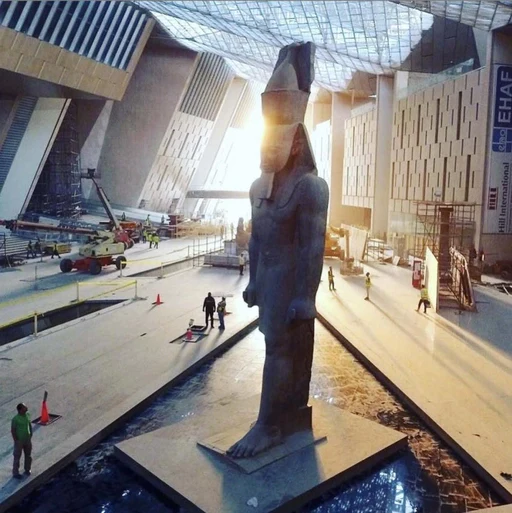
The Grand Egyptian Museum is the world's largest museum dedicated to a single civilization. The collection consisting of King Tut's tomb and tens of thousands of other rare and unique archaeological finds has found a new home in a museum built on the plateau of the pyramids of Giza. This highly complex and difficult-to-construct building bears the signature of BESIX and Orascom and is expected to become a center for culture and education, encouraging enthusiasm about Egypt's history. Exhibition galleries, storage center, conference center with 3D cinema, but also retail outlets, restaurants, and ancillary buildings: the new home of the royal mummies and other treasures of ancient Egypt is vast. So as not to disfigure the Giza Plateau, it has been built a small distance away, downhill from the pyramids of Khufu, Khafre and Menkaure. If its size and the complexity of its design match those of the pyramids, so too did the challenges associated with its construction.
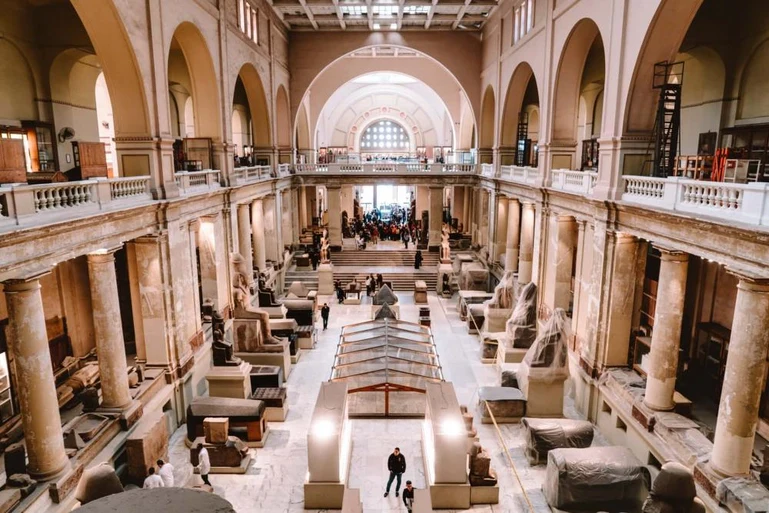
The Egyptian Museum is the oldest archaeological museum in the Middle East, and houses the largest collection of Pharaonic antiquities in the world. The museum displays an extensive collection spanning from the Predynastic Period to the Greco-Roman Era. The architect of the building was selected through an international competition in 1895, which was the first of its kind, and was won by the French architect, Marcel Dourgnon. The museum was inaugurated in 1902 by Khedive Abbas Helmy II, and has become a historic landmark in downtown Cairo, and home to some of the world’s most magnificent ancient masterpieces. The museum houses the splendid statues of the great kings Khufu, Khafre, and Menkaure, the builders of the pyramids at the Giza plateau. An extensive collection of papyri, sarcophagi and jewelry, among other objects, completes this uniquely expansive museum.

Founded in AD 970 as the centerpiece of the newly created Fatimid city, Al Azhar is one of Cairo’s earlier mosques. The building is a harmonious blend of architectural styles, the result of numerous enlargements over more than 1000 years. The tomb chamber, located through a doorway on the left just inside the entrance, has a beautiful mihrab (a niche indicating the direction of Mecca) and should not be missed. The central courtyard is the earliest part, while from south to north the three minarets date from the 14th, 15th and 16th centuries; the latter, with its double finial, was added by Sultan Al Ghouri, whose mosque and mausoleum stand nearby. A madrasa was established here in AD 988, growing into a university that is the world’s second-oldest educational institution. At one time the university was one of the world’s preeminent centers of learning, drawing students from Europe and all over the Islamic empire.

Located 40 km southwest of Cairo, Saqqara is one of the most important cemeteries of Memphis, which was itself one of the most important cities in ancient Egyptian history. The name of the site most likely derives from the god of this necropolis, Sokar. Saqqara is truly an open-air museum, one that has all of ancient Egyptian history on display. Kings and noblemen from the very first two dynasties (3100–2686 BC) were buried here, and this is also the location of the Step Pyramid of Djoser (2686–2613 BC), the world’s oldest monumental structure entirely made of stone. The pyramids of some of the most important kings of the Old Kingdom Fifth and Sixth Dynasties are located in Saqqara. One of these, the pyramid of Unas features the oldest pyramid burial chamber decorated with texts. These are the so-called Pyramid Texts, the purpose of which was to protect the deceased king on his journey to the afterlife. In addition to Old Kingdom royal burials, Saqqara is also full of the tombs of the noblemen of this period, which are decorated with scenes and texts of outstanding beauty and craftsmanship.
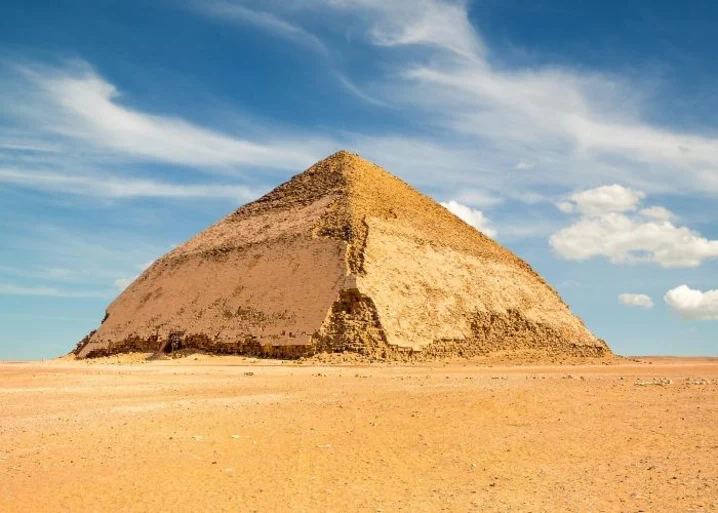
Located about 40 kilometers southwest of Cairo, the village of Dahshur marks the southern end of the vast pyramid field that begins at Giza. Excavations at Dahshur have revealed the remains of seven pyramids, as well as extensive tomb complexes built for queens and nobility from Memphis up until the 13th Dynasty in the Middle Kingdom. Two of the later pyramids constructed here have been completely destroyed by time and the elements and several others, such as the Black Pyramid (12th Dynasty, 1929-1885 BC), are badly damaged, but Dahshur also boasts two of Egypt’s best-preserved early pyramids. Both built during the reign of King Sneferu (2613-2589 BC), the founder of the 4th Dynasty, the Bent Pyramid and the Red Pyramid at Dahshur are massive evidence of the architectural development that led to the construction of the Great Pyramid and its companions at Giza.
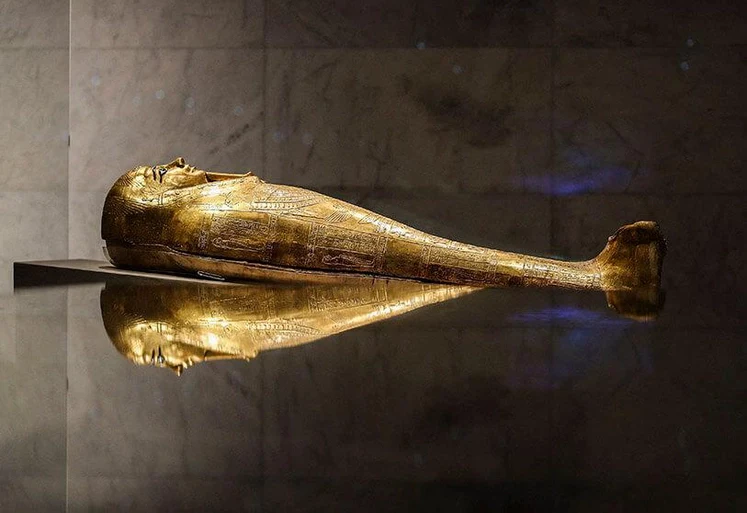
The National Museum of Egyptian Civilization (NMEC) is the first museum devoted to the entirety of Egyptian history. The museum showcases Egyptian civilization from prehistoric times all the way through the present day and is the new permanent home of the nation’s famous royal mummy collection. The huge collection of pharaonic mummies was ceremoniously moved in a grand televised official procession from the older Museum of Egyptian Antiquities in Tahrir Square to their new permanent home at the NMED at the end of 2020. All 22 mummies and 17 royal coffins made the voyage and will be on display. The new mega-museum will also borrow artifacts from other prominent museums in the capital throughout Egypt. The NMEC differs from the old Museum of Egyptian Antiquities and the Grand Egyptian Museum (GEM) because its collections cover the entirety of Egyptian history as opposed to a sole focus on the country’s ancient history, as is the case in Egypt’s other top museums.

The Mosque of Muhammad Ali is located inside the Citadel of Salah al-Din al-Ayyubi (Saladin) in Cairo. It was built by Muhammad Ali Pasha in 1848 AD on the site of Mamluk palaces. This mosque is known as the "Alabaster Mosque", in reference to its marble paneling on its interior and exterior walls. The mosque’s twin minarets are the highest in all of Egypt, each reaching a height of 84 meters. The mosque was built in the Turkish style that consists of an open court and prayer hall. The prayer hall is a square space surmounted with a large central dome which is surrounded by four semi-domes and four shallow domes in the corners. There are two minbars (pulpits) inside the mosque. The original of the two is made of wood decorated in green. The other was a later addition made of marble. The outer open court contains a copper clock tower, which was gifted to Muhammad Ali Pasha by Louis Philippe of France in 1845 AD. Muhammad Ali Pasha reciprocated the gesture with an obelisk of Ramesses II’s (c.1279–1213 BC) that stood in front of Luxor Temple. Today, it stands in the Place de la Concorde Square, Paris.
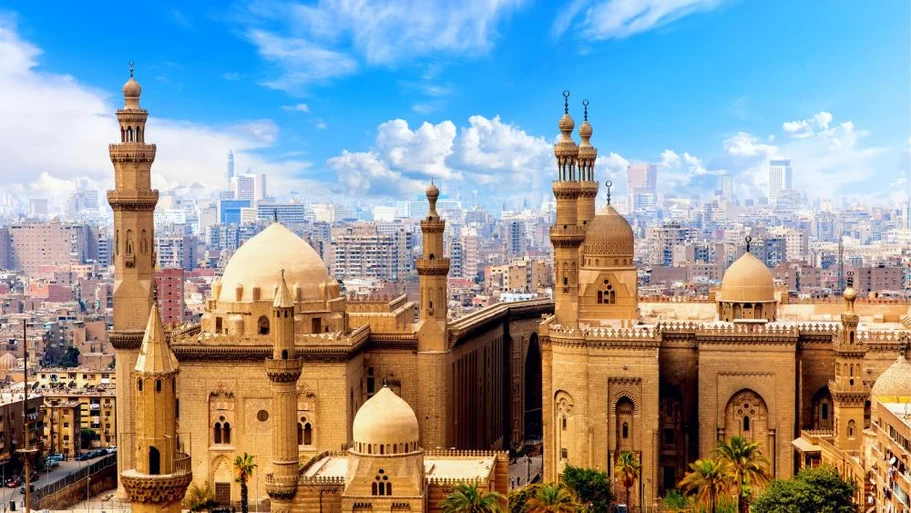
Massive yet elegant, this grand structure is regarded as the finest piece of early Mamluk architecture in Cairo. It was built between 1356 and 1363 by Sultan Hassan, a grandson of Sultan Qalaun; he took the throne at the age of 13, was deposed and reinstated no less than three times, then assassinated shortly before the mosque was completed. Beyond the striking recessed entrance, a dark passage leads into a peaceful square courtyard surrounded by four soaring iwans (vaulted halls). The iwans were dedicated to teaching the four main schools of Sunni Islam. At the rear of the eastern iwan, an especially beautiful mihrab (niche in the mosque indicating the direction of Mecca) is flanked by stolen Crusader columns. To the right, a bronze door leads to the sultan’s mausoleum. During construction one of the minarets collapsed and killed some 300 onlookers sparking superstitious rumors that Sultan Hassan's rule was at an end. They weren't wrong. Just over a month later, he was murdered by his army commander.
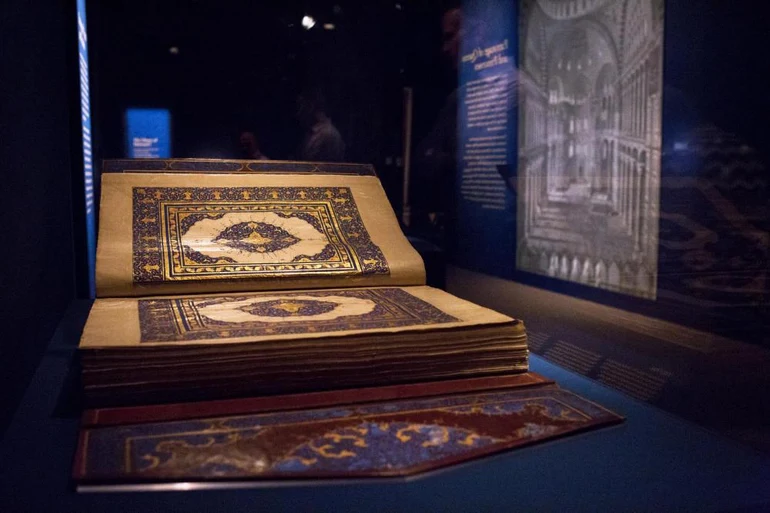
The Museum of Islamic Art contains one of the largest and most extensive collections of Islamic artifacts in the world. The idea of collecting and displaying the grand collection of artifacts began in 1880 AD. Eventually the building was established and inaugurated in 1903 AD, during the region of Khedive Abbas Helmy ll. The building’s facade was made in the Mamluk style and is adjacent to the National Library of Egypt. In 2014, an explosion targeting the opposite building (Cairo Security Directorate), impacted the façade. It was restored and reopened in 2017. The museum’s building consists of two floors that exhibit a large selection of artifacts from all over the world, covering subjects such as astronomy, medicine, and architecture. The vast collection takes the visitor on a journey through all periods of Islamic history, displaying some of the most magnificent artifacts. These include finely carved woodwork, delicately decorated ceramics, and rare manuscripts.
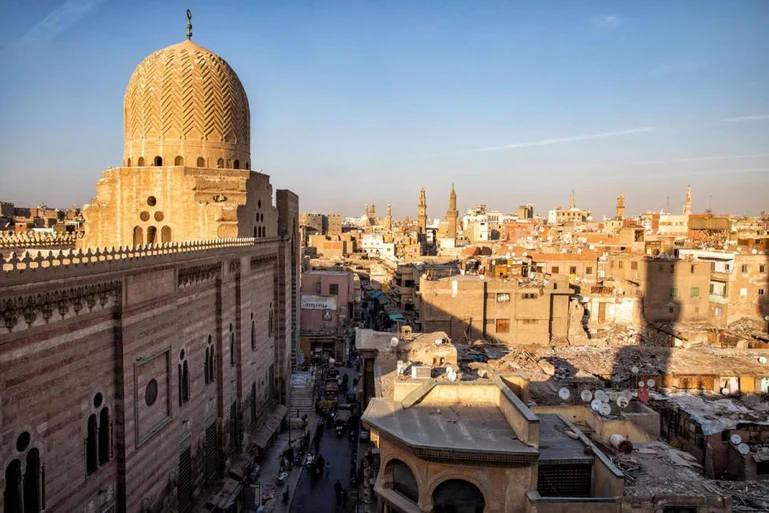
Bab Zuwayla, with its impressive dimensions, perfect stone masonry, and graceful twin minarets rising from its round-fronted towers, is one of Cairo’s most iconic monuments. It is the only remaining gate of the southern wall of the city’s Fatimid phase. It lies at the end of Khiyamiyya Street and opens onto the historic al-Muizz Street, which leads to Bab al-Futuh. Built by the Fatimid vizier, Badr al-Jamali, in 485 AH/1092 AD. The gate was named after the tribe of Zuwayla, who came from north Africa with Jawhar al-Siqili and quartered near the gate. Bab Zuwayla was also known as Bawabat al-Mitwalli, after Mitwalli al-hesba, the official in charge of finances and tax collection, who was based here. Mitwalli, "one of the righteous friends of Allah," resides in this area, and performs miracles. The gate consists of two semicircular towers and the entrance lies between them. The minarets were not added until 818 AH/1415 AD, when the Mamluk Sultan al-Muayyad Shaykh built a mosque next to Bab Zuwayla.

This enormous mosque - the biggest in Cairo in terms of land area - was built in the 9th century CE under the orders of Ahmad Ibn Tulun. A slave-soldier, he was sent to govern Egypt under the Abassid Caliphate, and within four years had effectively established himself as an independent ruler. He created his own capital city, Al-Qata'i, and commissioned the mosque as its main focal point. When the short-lived Al-Qata'i was destroyed in the 10th century, the Mosque of Ibn Tulun was the only building that survived. Covering a space of over 6 acres (2.5 hectares), the Mosque of Ibn Tulun consists of an immense courtyard that was built to separate the inner sanctum from the secular society surrounding it. Four covered halls line each side of the courtyard, and in the center, a fauwara - fountain - from the 13th century has replaced the original 9th century gilt-domed version. One of the mosque's most magnificent features is its minaret, famous for its exterior spiral staircase, similar to that of the Great Mosque of Samarra, in Iraq.
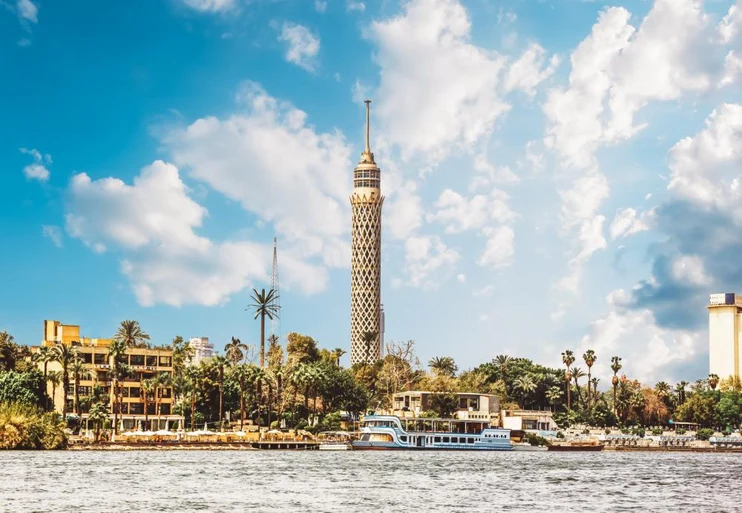
The tallest building in North Africa since construction ended in 1961, the iconic Cairo Tower offers incredible panoramic views over the Egyptian capital. Cairo Tower, soaring over the Egyptian capital at 187 meter in height, was the tallest tower in the whole of Africa for ten years after it was built, and remains the tallest in North Africa to this day. From the outside, the intricate latticework of the concrete tower, open at the top to reveal its crown of an observation deck, is designed to represent a Pharaonic lotus flower, one of the symbols of Ancient Egypt. The landmark is illuminated each evening in different colors, making it a truly beautiful sight against the night sky. Reaching the top of the tower, there's an open-air observation deck with telescopes offering incomparable views over Cairo and its surrounding area. Spot the Saladin Citadel, the Pyramids of Giza and of Saqqara and more!
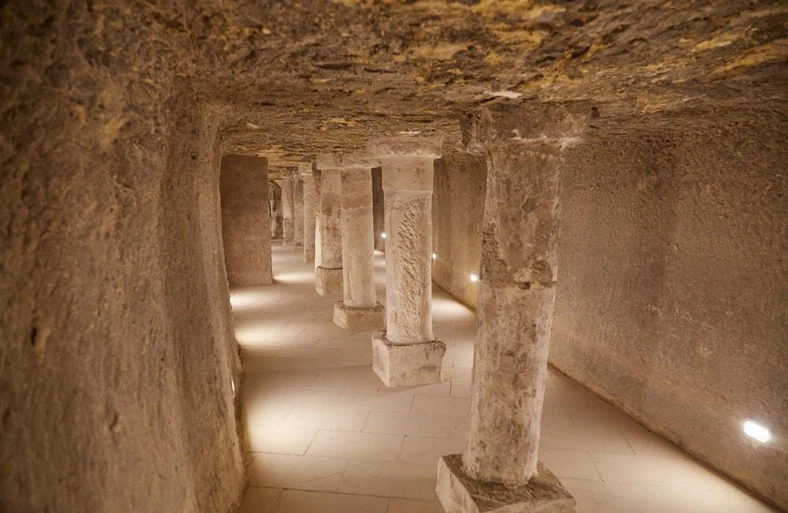
Djoser’s Step Pyramid in Saqqara is one of Egypt’s most iconic monuments—and rightfully so. It constitutes a significant historical turning point in ancient Egyptian funerary monuments, revolutionizing stone architecture and royal burials. In addition to its beauty and monumental scale, it is not only the very first pyramid that the ancient Egyptians ever built, but also the oldest known ancient Egyptian stone structure. The sheer age of the Step Pyramid is astounding. It was built in the early Third Dynasty, during the reign of King Netjerikhet (c.2667–2648 BC), who is now more well-known as Djoser. The Step Pyramid is composed of six stacked mastabas, thus creating the stepped effect. Imhotep, its architect, may very well have been responsible for this major innovation. At one end of the pyramid complex, a structure known as the South Tomb is believed to have acted as an additional, symbolic, tomb for Djoser, perhaps reflecting his role as the dual king of both Upper and Lower Egypt.
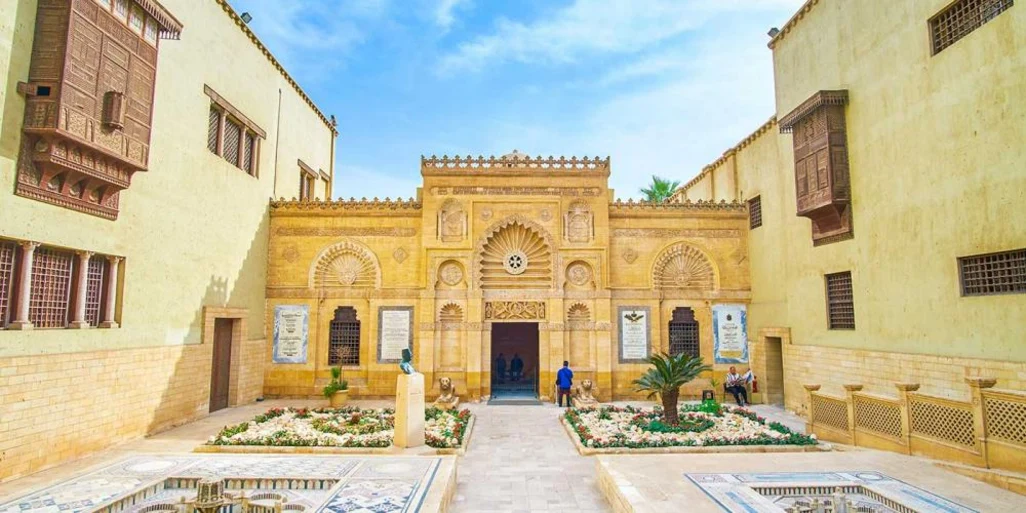
The Hanging Church is Al-Fustat (Old Cairo's) oldest church. Its name, Al-Muallaka (the hanging), was given to it since it was built on the ruins of two old towers belonging to an ancient fortress known as the Fortress of Babylon. The church was originally built at the end of the 3rd Century A.D and beginning of the 4th Century A.D, although it has been reconstructed and renovated several times since. This church has played an important role in the history of the Coptic Church because it was once the seat of the Patriarchs, after it was transferred from Alexandria to Al-Fustat. There are 110 icons here, the oldest of which dates back to the 8th Century. In 1898 A.D., the overseer of the church, Nakhla Al- Baraty Bey, bestowed some of them as gifts.

The Museum of Prince Muhammad Ali’s Palace in Manial is one of the most beautiful and important historical museum in Egypt. The museum exhibits an important period in the history of modern Egypt and is characterized by its architectural design. Its modern Islamic style merges with Persian and Mamluk elements. It was also inspired by Syrian, Moroccan and Andalusian motifs, as well as Ottoman style. The building thus harmonizes between a number of Islamic architectural traditions. The palace of Prince Muhammad Ali Tawfik was established between 1900-1929 AD and consists of an outer wall that surrounds the entrance to the palace. Inside the walls is the reception area, the clock tower, the Sabil, the mosque, the hunting museum, living quarters, the throne hall, the private museum, and the golden hall, in addition to the wonderful garden surrounding the palace.
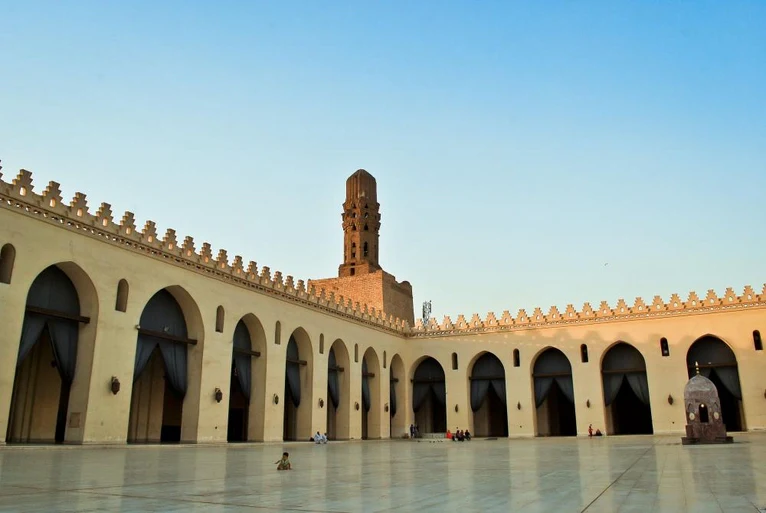
The Mosque of al-Hakim bi-Amr Allah is the fourth oldest mosque in Egypt, and the second largest after the Mosque of ibn Tulun. The construction of the mosque was begun by al-Hakim’s father, the Fatimid Caliph al-Aziz bi Allah in 990 AD, but he died before its completion, leaving his son to finish it. The main entrance lies on the western facade of the mosque, and is monumental in size and design. It is one of the oldest architectural examples of projecting entrances, and was influenced by the great Mosque of Mahdiya in Tunis. The plan of the mosque consists of a triangle with four arcades centering a courtyard. Two minarets flank either side of the façade. The mosque has undergone several restoration phases throughout the years. The mosque has a long and intriguing history, including its role as a barracks during the French campaign, when its minarets were utilized as watch-towers. Its qibla arcade was used as a museum of Islamic art called the House of the Arab Antiquities.
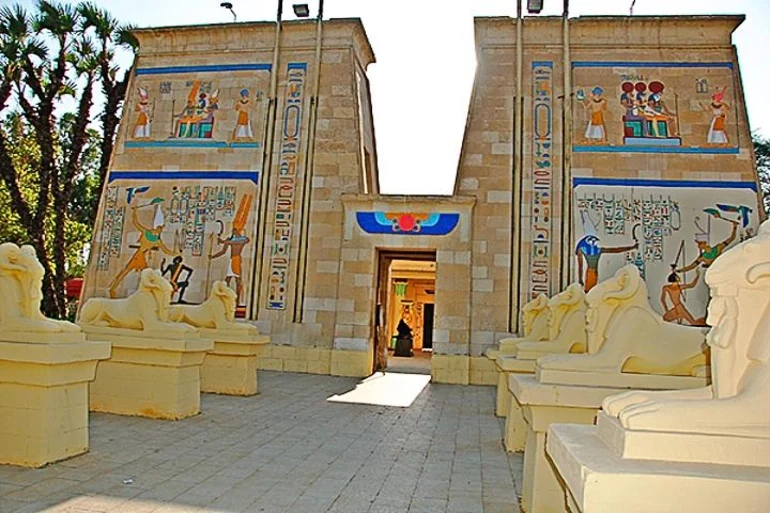
The Pharaonic Village is a unique place where Egypt's entire history is explained in 2-3 hours, from ancient living to modern times. It is located on an island in the Nile, just 3 miles south of the center of Cairo. The village also boasts a complete replica of King Tutankhamun's tomb complete with all of his exquisite treasures as well as 12 new museums about (mummification and medicine, pyramid building, arts and beliefs, ancient Egyptian boats, Cleopatra's museum, Coptic history, Islamic civilization, Napoleon's expedition to Egypt, Egypt's modern history museum).
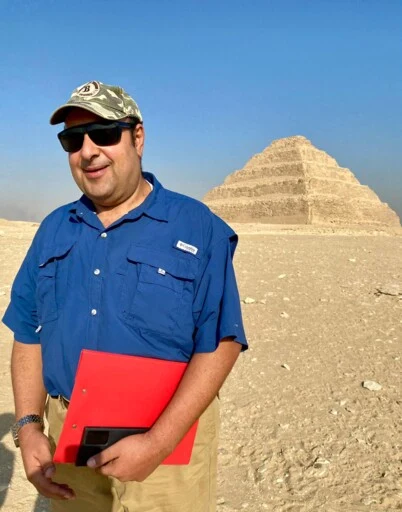 pro
proLanguages:
Profile verified
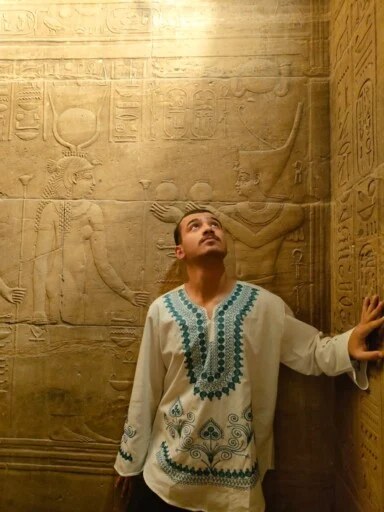 pro
proLanguages:
Profile verified
 local
localLanguages:
Profile verified
 local
localLanguages:
Profile verified
 pro
proLanguages:
Profile verified
 pro
proLanguages:
Profile verified
 local
localLanguages:
Profile verified
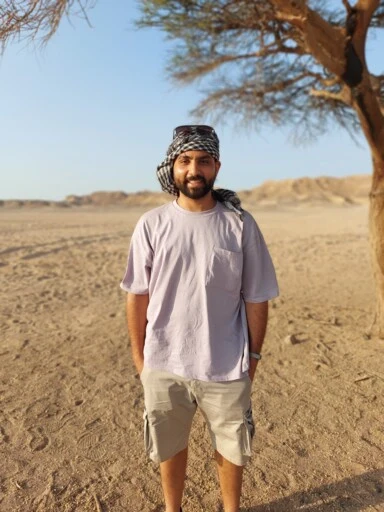 local
localLanguages:
Profile verified
 local
localLanguages:
Profile verified
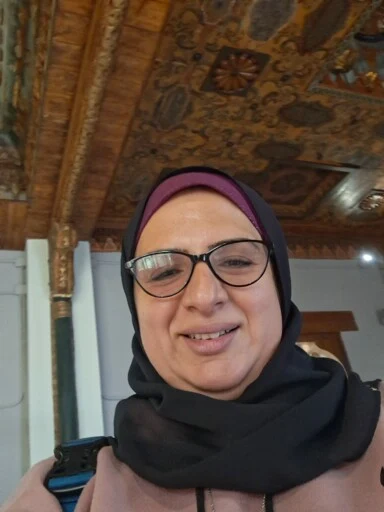 pro
proLanguages:
Profile verified
 pro
proLanguages:
Profile verified
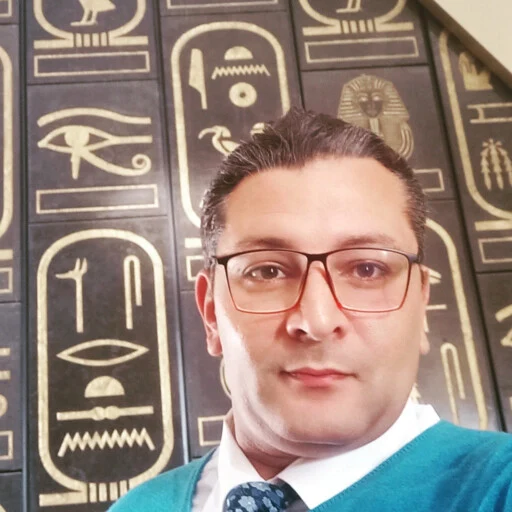 pro
proLanguages:
Profile verified
 pro
proLanguages:
Profile verified
 pro
proLanguages:
Profile verified
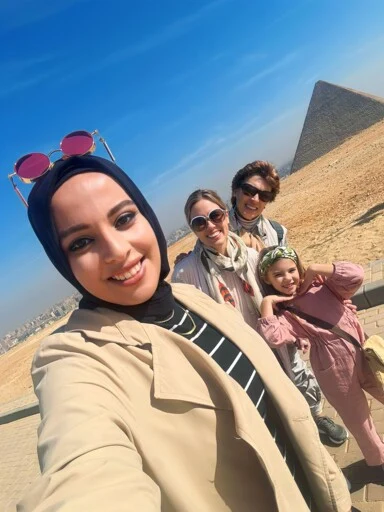 local
localLanguages:
Profile verified
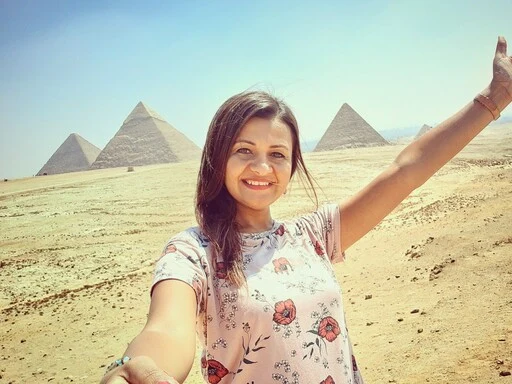 pro
proLanguages:
Profile verified
 local
localLanguages:
Profile verified
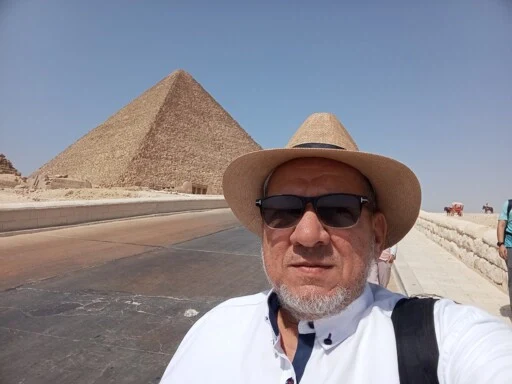 pro
proLanguages:
Profile verified
 pro
proLanguages:
Profile verified
 pro
proLanguages:
Profile verified

Radwa Tarek
13.08.2025
In Egypt we have different attractive sites like Giza Pyramids,Step pyramid the 1st complete building in history,Citadel of Saladin and Mohamed Ali mosque,Hanging church and khan al khalily bazar,Rifaai mosque where the last Shah of Iran buried.

Giza pyramids and Grand Egyptian museum Saqqara pyramid
Find a personal guide in just 1 minute and create your dream itinerary!

FindGuide is a platform for finding private and local guides around the world. You can choose a guide in advance who will show you the city from a local perspective, not just the standard tourist route.
Enter the city or country you're interested in into the search bar, choose a guide you like, and send them a request. All bookings are made directly on the platform.
We offer walking, food, historical, driving, private, and family tours in more than 100 destinations.
Yes, all guides go through moderation and verification. You can read reviews from other travelers, check the guide’s rating, and view their profile with photos and experience descriptions.
Tour prices vary depending on the destination, duration, and format. You see the cost upfront — no hidden fees.
Yes, the app is completely free for tourists. You can place your tour requests for local guides and access expert travel content totally free of charge.

